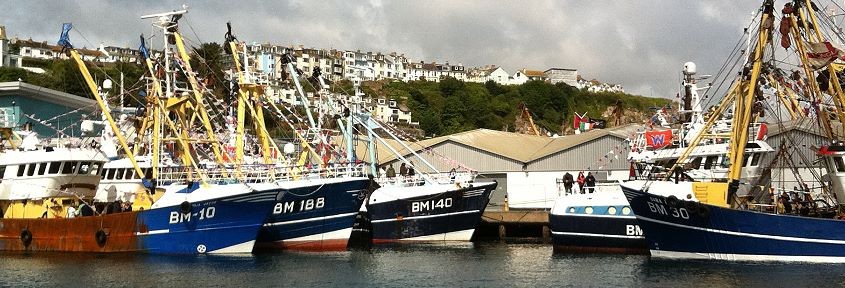Complying with the new safety regulations applying to enclosed spaces on board fishing vessels
Whilst I would not want you to stop reading this article, the new 2022 regulations imposing duties surrounding entering and/or working in enclosed spaces will not take effect for fishing vessels until 14 May 2023. This gives owners and skippers sufficient time to ensure they are ready to comply with the practices and procedures required to ensure that crew members, and other persons entering enclosed spaces on board their vessels, are adequately protected.
The requirements under new The Merchant Shipping and Fishing Vessels (Entry into Enclosed Spaces) Regulations 2022 are explained in MGN 659 (M+F). They provide, for the first time, a clear definition of an enclosed space as being, “a space which is not designed for continuous worker occupancy and has either or both of the following characteristics –
(a) limited openings for entry and exit;
(b) inadequate ventilation”
An enclosed space will include any area which has been closed and without ventilation for a period of time, such as RSW and Vivier tanks, fuel tanks, bait stores, fish rooms, freshwater tanks, sea or freshwater ballast tanks, net stores, chain lockers, void spaces and stores containing chemicals.
MGN 659 (M+F) confirms that “In enclosed spaces, the environment can develop an oxygen-deficient, oxygen-enriched, flammable and/or toxic atmosphere, all of which are hazardous to human health.”
The previous regulations, The Merchant Shipping (Entry into Dangerous Spaces) Regulations 1988, did not apply to fishing vessels. However, following a recommendation from the MAIB, the 2022 regulations were extended to apply to a wider range of vessels, including fishing vessels. This followed several serious accidents on board fishing vessels investigated by the MAIB, including one involving multiple losses of life, where crewmembers entered an enclosed space to attempt a rescue but quickly became similarly overcome by the toxic atmosphere (ERRV Viking Islay, 2007). In UK ports, 6 people have died over a 10 year period between 2009 to 2019 whilst working in confined spaces.
Whilst there are currently no regulations applicable to enclosed spaces, guidance applying to fishing vessels was issued by the MCA as long as go as 2006; this guidance can be found in MGN 309(F). The note warns of the unseen risks from the build-up of gases in enclosed spaces and provides guidance on the avoidance of such risks.
Whilst time for complying with the new regulations has been extended to 2023 for fishing vessels to give owners and skippers sufficient opportunity to become compliant, it is imperative that steps are taken at the earliest opportunity. Not just to save lives but because breaching the regulations will be a criminal offence, for which the vessel could be detained and fines or a prison sentence imposed for non-compliance.
What do owners and skippers need to do to be compliant?
Some of the new regulations do not apply to fishing vessels, for instance, regulation 6 (entrances to enclosed spaces to be kept closed), regulation 8 (drills to be carried out at least every 2 months) and regulation 9 (appropriate portable atmosphere testing equipment to be carried).
The requirement for fishing vessels not to carry out drills in relation to enclosed spaces does not affect other drills that must be carried out on board and recorded, including muster stations drills, fire, collision/grounding, hull damage/taking water/sinking and abandon ship.
Regulation 7 applies to fishing vessels. This requires owners, skippers, crewmembers and others to ensure they have a system of work which provides:
- A system of work for entry into and working in enclosed spaces, provided and maintained in accordance with regulation 5 (general duties) of the Merchant Shipping and Fishing Vessels (Health and Safety at Work) Regulations 1997.
- Assessments of risks of entry into and working in enclosed spaces made in accordance with regulation 7 (risk assessment) of the 1997 regulations.
- The skipper is required to ensure that the systems of work referred to at 1. above are observed on board the vessel.
- No person may enter or remain in an enclosed space, unless acting in accordance with the systems of work referred to at 1. above.
Paragraph 7.3 of MGN 659 (M+F) provides additional detail regarding the usual requirements when following procedures to assess risks and, if more information is required, advises review of the guidance document “Fishing Vessel Risk Assessment and Safety Management Systems”, published by the MCA in April 2021.
Particular advice regarding assessing risk in relation to enclose spaces in the MGN includes:
- Considering the environment and activity as a whole and any other potential safety hazards, including but not limited to low lighting and reduced visibility, trip hazards, low ceilings and narrow walkways.
- Risks caused by activity which may cause a change in atmosphere such as hot work and use of paints, glues and coatings.
- The ship design and layout as a hazardous environment.
- Spaces that are connected to or adjacent to enclosed spaces due to the migration of invisible gases between the spaces and the fact that atmospheres can change over time.
- The nature of fishes’ ability to decay and release chemicals into the atmosphere.
It is a requirement that the Secretary of State reviews the operation and effect of the regulations, considers whether its objectives have been achieved, and publishes a report every 5 years, giving consideration to whether the regulations should be amended or revoked.
As endorsed above, now would be a good time to ensure that your vessel’s risk assessments and systems of work have been updated to include enclosed spaces. As well as providing MGN 659 (M+F), the MCA has also published freely available leaflets and posters to raise awareness of safe procedures surrounding enclosed procedures, which you may find of interest.



